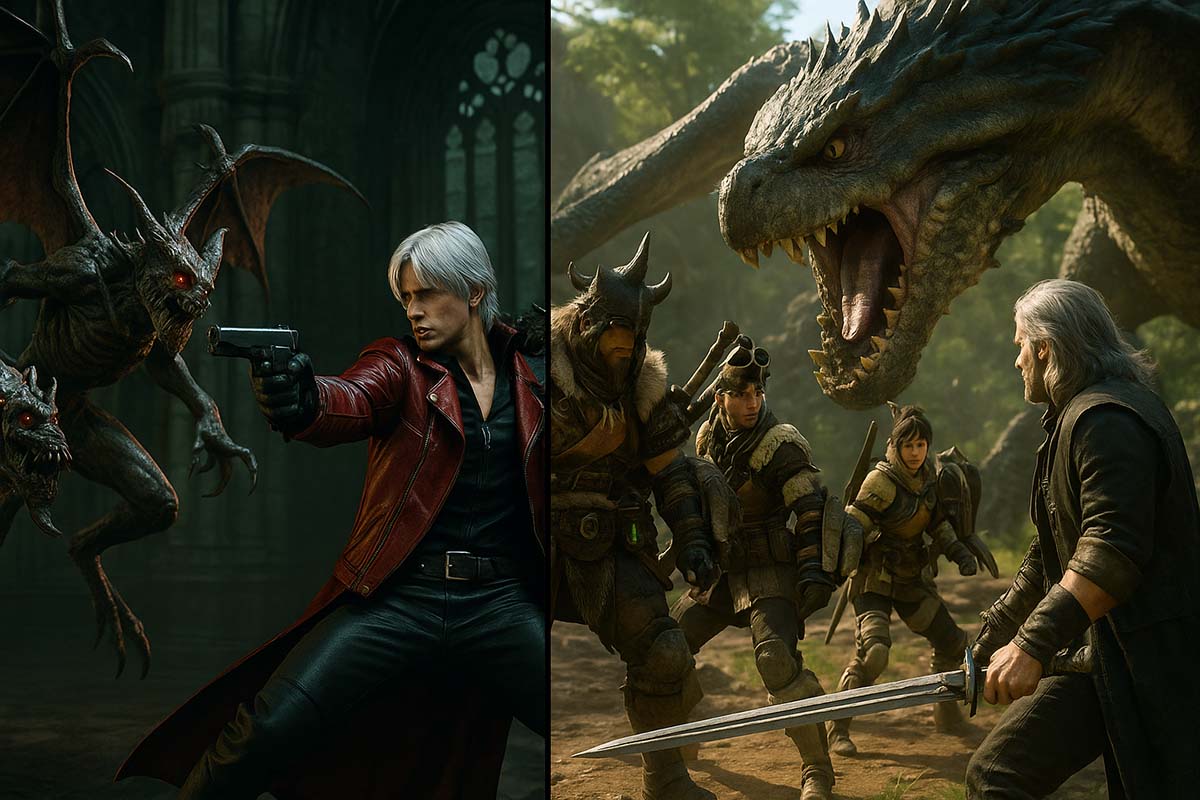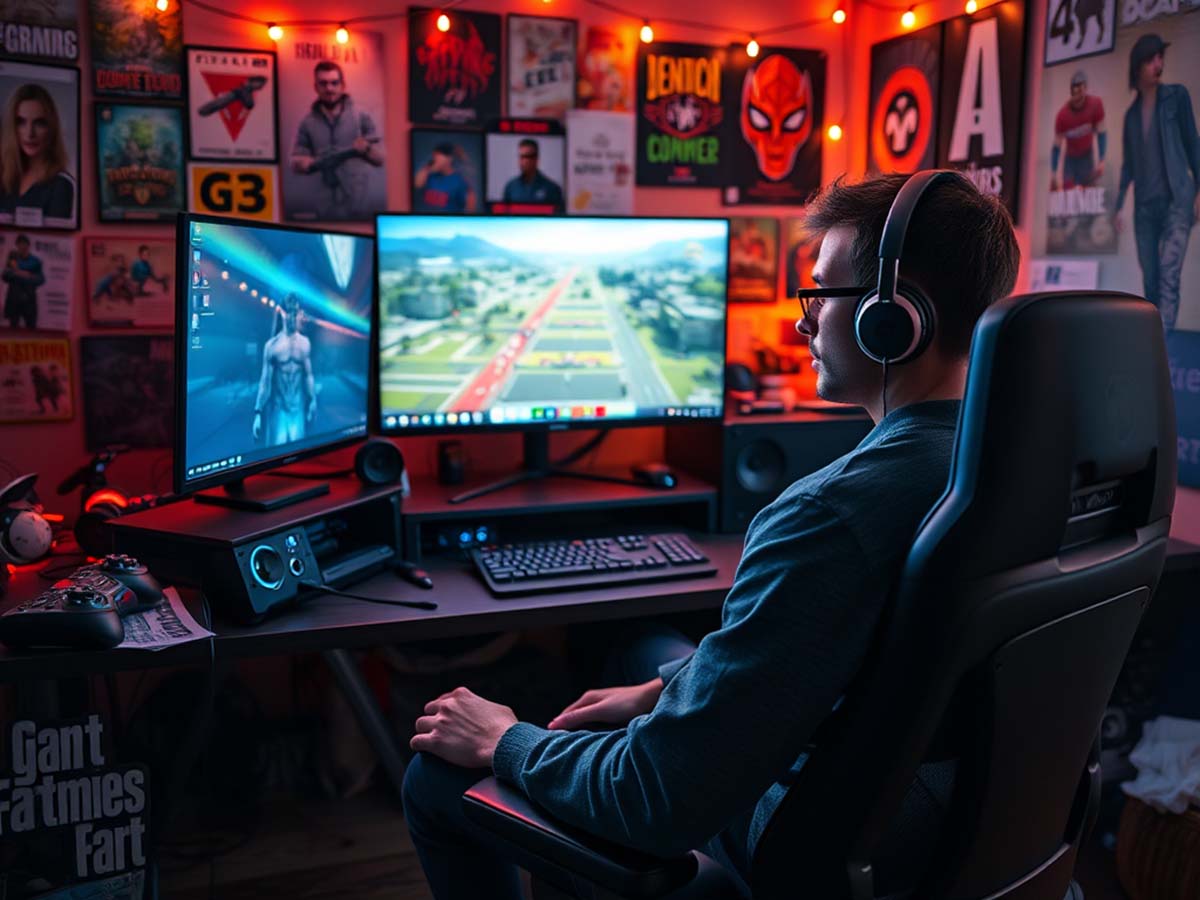How Capcom Changed the Face of the Hack and Slash Genre
Key Points
Capcom played a crucial role in advancing the hack and slash genre on the global gaming stage. Through franchises such as Devil May Cry and Monster Hunter, they set high standards for action, style, and technical gameplay. This article examines how their design became a global benchmark and how it influenced other developers. By focusing on character-driven narratives and challenging combat systems, they deepened the player experience and lasting legacy. Fans remember the thrill of landing perfect combos and the joy of mastering each challenge. They built a community around each release and cultivated a dedicated fan base. Truly.
Origins of a Global Phenomenon
In the late 1990s and early 2000s, many action games followed a simple and linear formula. Titles often emphasized story over mechanics, with combat serving as a basic distraction. When Capcom released the first Devil May Cry in 2001, the industry woke up to a new standard. It was no longer enough to defeat an enemy; players had to do that with style, speed, and precision.
The game began as an experiment with Resident Evil 4 but evolved into its own series due to a unique gameplay direction. Developers saw the potential of combining gothic themes with fast-paced combat. With a complex and rewarding combo system, Devil May Cry stood out as a model for blending action with technical depth. Many players still cite its innovative approach as a turning point in action game design. Early action titles lacked depth, making DMC’s arrival feel groundbreaking.
Crafting a Distinct Style and Movement
Capcom did more than change gameplay. With their titles, style became part of each character’s identity. Dante, for example, emerged as a symbol of swagger in gaming. His dual pistols, sword, and signature red coat served as visual cues for his fluid combat style. His cocky personality and witty dialogue added depth to the battles. A memorable soundtrack and dynamic camera angles heightened each encounter.
Nero joined the fight in later installments, showing that new heroes could carry similar style. His mechanical arm, known as the Devil Bringer, offered fresh mechanics. The company also designed visual effects and camera work to highlight every slash, combo, and dodge in a dramatic way. Developers around the world began to notice how presentation could improve immersion in a hack and slash title. Even minor enemies received unique animations, making each battle feel distinct. Music and audio design complemented the visuals and gameplay.
Technical Innovation: Timing, Precision, and Combo Mastery
Hack and slash is not just about speed. In Capcom’s games, mastering timing was essential. Enemies had distinct behaviors, so players needed to study their patterns. Simply spamming attacks was inadequate. Players had to know when to retreat, jump, or switch weapons. Learning enemy tells and managing resources became central to success.
Devil May Cry 3 showcased the Style system. Players could choose styles such as Trickster, focused on mobility; Swordmaster, concentrated on melee; or Gunslinger, centered on ranged combat. This emphasis on strategy helped make gameplay more personal and rewarding. Each style changed how players approached stages. Experimenting with different loadouts added replay value. Rankings for each mission encouraged players to refine skills and aim for the highest score.
Influence on Other Franchises
Capcom’s success in hack and slash did not stay within a single series. The Monster Hunter franchise, for instance, combined tactical combat, precise timing, and cooperative gameplay. Although its pacing differed from Devil May Cry, it retained the principle of weapon mastery and effective combos. Hunters learned to exploit monster weaknesses with careful planning.
Another example is Sengoku Basara, which offered a stylized and over-the-top take on Japanese historical battles. Capcom demonstrated its ability to adapt hack and slash mechanics to different settings and themes. Onimusha, one of their earlier efforts, blended samurai lore with supernatural elements in a way that hinted at future innovation. Beyond Capcom, other studios took note. Developers of Darksiders and Lords of the Fallen credited Capcom as a key influence.
Capcom’s Impact on Global Game Design
Game developers worldwide have admitted to drawing inspiration from Capcom’s style. Franchises like God of War and Bayonetta show clear influences from Devil May Cry. In fact, Hideki Kamiya, the creator of Bayonetta, was once part of the Capcom team.
The idea of grading performance based on style became common. Rather than simply finishing a level, players were rewarded for creative execution. Dynamic ranking systems such as “S Rank” added a new layer of challenge for dedicated gamers. This shift placed emphasis on mastery and encouraged speedrunning communities. Streamers often highlight style meters during live playthroughs.
Memorable Examples
Notable titles from Capcom reshaped the hack and slash genre. Devil May Cry (2001) introduced the style-based combat system that rewarded flair. Players felt empowered by learning varied moves and earning high ranks. Devil May Cry 3 (2005) earned a reputation as one of the most challenging yet rewarding entries in the series. It offered deeper customization and multiple difficulty levels. Monster Hunter World (2018) brought the franchise to a wider audience with large-scale battles and cooperative hunting monsters.
Role of Technology in System Development
Modern engines like the RE Engine formed the foundation for more fluid and responsive combat mechanics. In Devil May Cry 5, players immediately felt fast input and deep controls. Capcom focused not only on graphics but also on the responsiveness and feel of each action. Frame rates above sixty frames per second improved responsiveness. The engine allowed quicker load times, reducing disruption between levels. These tools showcase remarkable success.
Additionally, the use of motion capture and real-time animation blending helped maintain realism amid fantastical action. Developers captured actor movements and translated them into in-game animations. This process created smoother transitions between attacks, dodges, and environmental interactions. Sound design also played a role. Each weapon produced unique audio cues that signaled attack impact and range.
Adapting to the Modern Era and Consoles
New console releases posed challenges for developers, but Capcom seized the chance to improve gameplay. On PS5 and Xbox Series X, titles featured higher frame rates, smoother particle effects, and near-instant loading times. The DualSense controller’s haptic feedback on PlayStation improved the tactile feeling of each slash.
Capcom did more than upscale graphics. In Devil May Cry 5 Special Edition, players saw new characters and features that refreshed gameplay for veterans and newcomers alike. The addition of Vergil as playable content expanded the story. Ray tracing improved lighting, making environments and effects look more realistic. Improvements kept long-time fans engaged and attracted new players while broadening appeal.
Community Feedback and Iterative Design
A key factor in Capcom’s success is attention to community feedback. Many features in Devil May Cry 5, such as seamless weapon switching, originated from fan input. Active communication with players helped create more refined games. Developers monitored forums, social media, and official blogs to gather suggestions. Beta tests provided early data on balance and bugs. Surveys and live streams helped guide patches and updates.
The modding community also played a role. On PC, thousands of mods for Capcom titles highlight the deep connection fans have with these games. Mods ranged from simple quality-of-life improvements to total gameplay overhauls. Fan-made characters and costumes demonstrated how invested players were. Capcom occasionally supported this by releasing official mod tools, encouraging more creativity.
A Bright Path for the Future of Hack and Slash
As more games enter the global market, Capcom remains a dominant presence. Teasers for new projects suggest they will continue to deliver fresh yet familiar experiences. Their balance of tradition and innovation sustains their relevance. Upcoming projects may include virtual reality experiments and cloud-based multiplayer features.
Many have tried, but few match Capcom’s consistency in quality, identity, and impact. Aspiring developers study their design documents and presentations at industry events. Players eagerly await announcements at major conventions. These additions enriched experiences.



